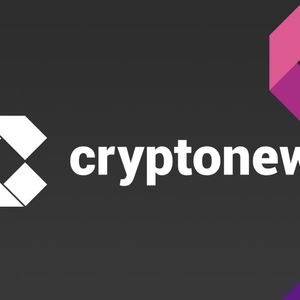BitcoinWorld ApeCoin DAO: A Transformative Shift in Web3 Governance with ApeCo’s Ascent In a move that has sent ripples across the Web3 landscape, the ApeCoin DAO , the decentralized autonomous organization behind the popular ApeCoin cryptocurrency, has officially approved a groundbreaking proposal to dissolve its current structure. This isn’t just a minor tweak; it’s a monumental step that signifies a significant evolution in how this prominent ecosystem will be governed and operated going forward. The decision, overwhelmingly supported by the community, marks the end of one chapter and the beginning of another, with a new entity named ApeCo poised to take the reins. For anyone following the cutting edge of decentralized finance and digital communities, this development is a must-watch. Understanding the Pivotal Community Vote : AIP-596 Explained The core of this transformative change lies in the approval of proposal AIP-596. This proposal sought to fundamentally restructure the governance and operational framework of the ApeCoin ecosystem by dissolving the existing DAO and establishing ApeCo as its successor. The results of the community vote were decisive, reflecting a clear mandate from the token holders: 99.66% voted in favor of the dissolution and transition. 0.32% voted against the proposal. 0.01% abstained from voting. These figures, derived from Snapshot data, not only demonstrate overwhelming support but also confirm that the proposal met crucial thresholds. It surpassed the 3.5% token participation quorum requirement and comfortably exceeded the 66% approval threshold needed for passage. Such a high degree of consensus on a decision of this magnitude is rare in the often-fractured world of decentralized governance and highlights a unified vision among ApeCoin holders for the project’s future. Why the Change? Exploring the DAO Dissolution The decision to pursue a DAO dissolution isn’t taken lightly. Decentralized autonomous organizations were initially hailed as the pinnacle of transparent, community-led governance. However, as the Web3 space matures, many DAOs have encountered practical challenges that can hinder efficiency and execution. These often include: Sluggish Decision-Making: The very nature of decentralized voting can lead to prolonged debates and slow progress on critical initiatives. Lack of Accountability: While distributed, the absence of clear leadership can sometimes make it difficult to assign responsibility for project failures or successes. Operational Inefficiencies: Managing day-to-day operations, legal compliance, and strategic partnerships can be complex and cumbersome within a purely decentralized structure. Resource Allocation Challenges: Distributing funds and managing budgets effectively across a broad, anonymous group can prove difficult. While the official proposal details the specific motivations for the ApeCoin DAO ‘s shift, it’s plausible that the move to ApeCo aims to address some of these common pain points, seeking to balance the ethos of decentralization with the need for agile, effective operations. This evolution is a testament to the dynamic nature of Web3, where experimentation and adaptation are key to long-term success. Introducing ApeCo : The New Horizon for ApeCoin With the DAO dissolution approved, all eyes now turn to ApeCo , the new entity tasked with steering the ApeCoin ecosystem forward. This transition represents a significant pivot, moving from a purely decentralized, community-driven operational model to one that appears to integrate more structured leadership while retaining community input. ApeCo will be led by Cameron Kates, who currently serves as the executive director of the Ape Foundation. He will be joined by other key members from both the Ape Foundation and the Banana Bill team, suggesting a blend of established leadership and experienced operational talent. The formation of ApeCo implies a more streamlined and perhaps more centralized approach to execution. While the exact operational specifics are still unfolding, the expectation is that ApeCo will provide: Clearer Leadership: A defined leadership structure can facilitate faster decision-making and clearer strategic direction. Improved Operational Efficiency: A dedicated team can focus solely on the growth and development of the ApeCoin ecosystem, including partnerships, product development, and community engagement. Enhanced Accountability: With a recognizable leadership team, there is a greater sense of responsibility and accountability for the project’s trajectory. This shift aims to empower the ApeCoin ecosystem to innovate and scale more effectively in a competitive Web3 landscape, ensuring that the project can respond swiftly to market changes and seize new opportunities. What Does This Mean for ApeCoin DAO Holders and Web3 Governance ? For existing ApeCoin DAO token holders, this transition signals a fundamental change in their role within the ecosystem. While the power of their community vote remains paramount for major decisions, the day-to-day operational control will shift to ApeCo. This raises important questions for the broader discussion around Web3 governance : Aspect Previous DAO Model New ApeCo Model (Anticipated) Operational Execution Primarily community-driven through proposals. Led by ApeCo team with clear roles. Decision-Making Speed Potentially slower due to voting cycles. Potentially faster due to dedicated leadership. Accountability Distributed among all token holders. Centralized within the ApeCo leadership. Community Role Directly involved in all proposals and operations. Primarily involved in strategic oversight and major decisions via voting. This shift highlights a growing trend in the Web3 space: the pragmatic evolution of governance models. While pure decentralization is an ideal, many projects are discovering that a hybrid model, combining centralized execution with decentralized oversight, might be more effective for achieving long-term goals and scaling operations. This makes the ApeCoin DAO’s move a critical case study for the future of Web3 governance . The Broader Implications for Web3 Governance and Decentralization The ApeCoin DAO ‘s decision is not an isolated incident; it’s part of a larger narrative unfolding in the world of Web3 governance . Many early DAOs have grappled with the complexities of truly decentralized operations, often finding themselves at a crossroads between ideological purity and practical efficacy. This move by a high-profile project like ApeCoin could set a precedent, encouraging other DAOs to reconsider their structures in pursuit of greater agility and impact. While some purists might view this as a step back from decentralization, proponents argue that it’s a necessary step towards maturity. The goal isn’t to abandon decentralization entirely, but rather to refine it, ensuring that core principles like transparency and community input are maintained, even if operational execution becomes more centralized. The success of ApeCo will be closely watched as a potential blueprint for other large-scale Web3 projects seeking to optimize their governance and operational models without sacrificing their fundamental ethos. The Path Forward: What’s Next for ApeCoin? With the DAO dissolution and the establishment of ApeCo, the ApeCoin ecosystem is poised for a new phase of development. The leadership team, comprising Cameron Kates and members from the Ape Foundation and Banana Bill, will likely focus on: Ecosystem Growth: Driving further adoption and utility for ApeCoin within the broader Web3 space, potentially through new partnerships and integrations. Product Development: Overseeing the creation and enhancement of tools, applications, and experiences that leverage ApeCoin. Community Engagement: While operations are streamlined, maintaining strong lines of communication and avenues for community feedback will be crucial to ensure the spirit of the ApeCoin DAO endures. Strategic Vision: Developing and executing a clear, long-term roadmap for the ApeCoin project, aligning with the aspirations of its token holders. This transition represents a dynamic period for ApeCoin. It’s an opportunity to learn from the challenges of pure decentralization and build a more robust, efficient, and impactful organization that can truly deliver on the promise of its ecosystem. Conclusion: A New Chapter for the ApeCoin DAO and Beyond The approval of AIP-596 marks a truly transformative moment for the ApeCoin DAO . The overwhelming community vote in favor of DAO dissolution and the transition to ApeCo signals a pragmatic evolution in Web3 governance . This shift aims to combine the agility of a more structured operational entity with the foundational principles of community ownership and decentralized oversight. As ApeCo takes the reins, the crypto world will be watching closely to see how this new model performs, potentially setting a new standard for how large, community-driven projects navigate the complexities of growth and governance in the ever-evolving Web3 landscape. It’s a bold step, reflecting a maturing ecosystem willing to adapt and innovate for long-term success. To learn more about the latest Web3 governance trends, explore our article on key developments shaping decentralized autonomous organizations’ future operational models. This post ApeCoin DAO: A Transformative Shift in Web3 Governance with ApeCo’s Ascent first appeared on BitcoinWorld and is written by Editorial Team


















